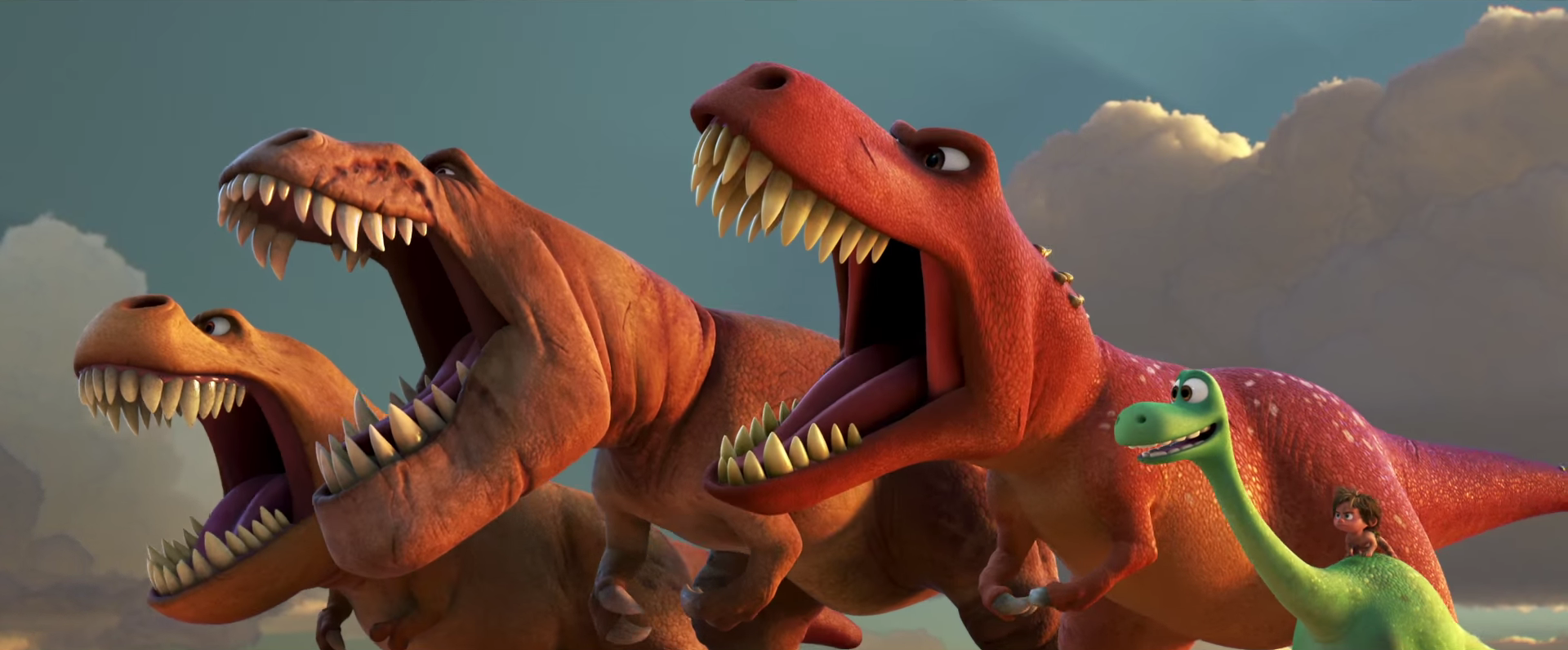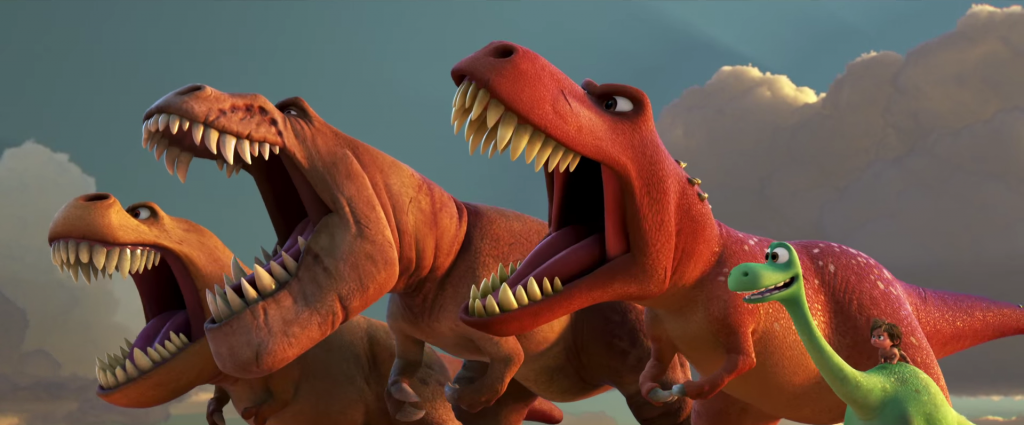From Toy Story to Inside Out, Pixar’s hit streak extends about 20 brilliant years in a DiMaggio-esque fashion. When the name appears alongside a movie, that film is immediately elevated to the status of must-see whether you are 5, 10, 50 or 100 years old (and if you’re 100 years old and still going to the movies, the most major of props to you). Pixar’s most recent film, The Good Dinosaur, released by Disney, is an hour and 40 minutes of continued success for the animation titan. Directed by Peter Sohn, The Good Dinosaur provides us with an endless amount of the feels while staying true to the Pixar motif of the underdog turned hero and the ultimate power of family and friendship.
The film’s central character is Arlo, a lovably undersized Apatosaurus in a family of five, who is attempting to “earn his mark” by completing an essential task on the family farm. “Earn your mark” becomes the essential narrative of the film, setting the way for Arlo’s turbulent rise to heroism after the Mufasa-like death of his father and his quest to get home after being separated from his family in a flash flood. Arlo’s relationship with his main companion, Spot, a feral child without the ability to speak and the mannerisms of a dog, serves as a necessary schooling in how people — and dinosaurs — of even the most varied backgrounds can come together to make a dynamic duo. Their surface-level incompatibility is slowly melted away by their need for companionship, creating a bond that produces some of the cutest moments in cinema history.
While undeniably enjoyable and lethally cute, The Good Dinosaur is not Pixar’s most innovative film. It isn’t the unbelievably realistic trip inside the mind that is Inside Out, and ultimately acts as a sort of prehistoric Finding Nemo. The plot is somewhat predictable, filled with maturity-inducing downfalls that lead to a triumphant ending audience members over the age of 10 will most likely see coming. However, The Good Dinosaur isn’t pegging itself as the most revolutionary masterpiece in the long-running history of animation. Instead of putting too much effort into a trailblazing premise or wholly original format, Pixar sticks firmly to its feel-good roots: A main character overcomes seemingly insurmountable odds while maintaining an off-the-charts level of adorableness throughout a story with a clear moral, the aforementioned “earn your mark.” Any points The Good Dinosaur loses for a lack of information, Sohn and his crew easily gain right back by making a film that is indisputably good.
As I sat in a theater filled with mostly children and their parents, I did not find myself wishing I could once again view these types of films through the wondrously curious and open eyes of a child. Now older, and hopefully wiser, than I was while viewing the Pixar films of my late ’90s, early 2000s childhood, I’m now able to appreciate the films for a newfound reason. With the ability to appreciate and decipher the underlying message of a film like The Good Dinosaur, it becomes obvious why these Pixar films all have such an unwavering element of longevity. They are animated reality checks, teaching not just children, but also adults, crucial lessons on inherent values of goodness that seem to fade as we age. In a time when humanity seems to need it more than ever, The Good Dinosaur subtly reminds us that if a dinosaur and a mute, dog-like child can put aside their differences to become not only allies, but also the best of friends, so can we with our fellow man.





